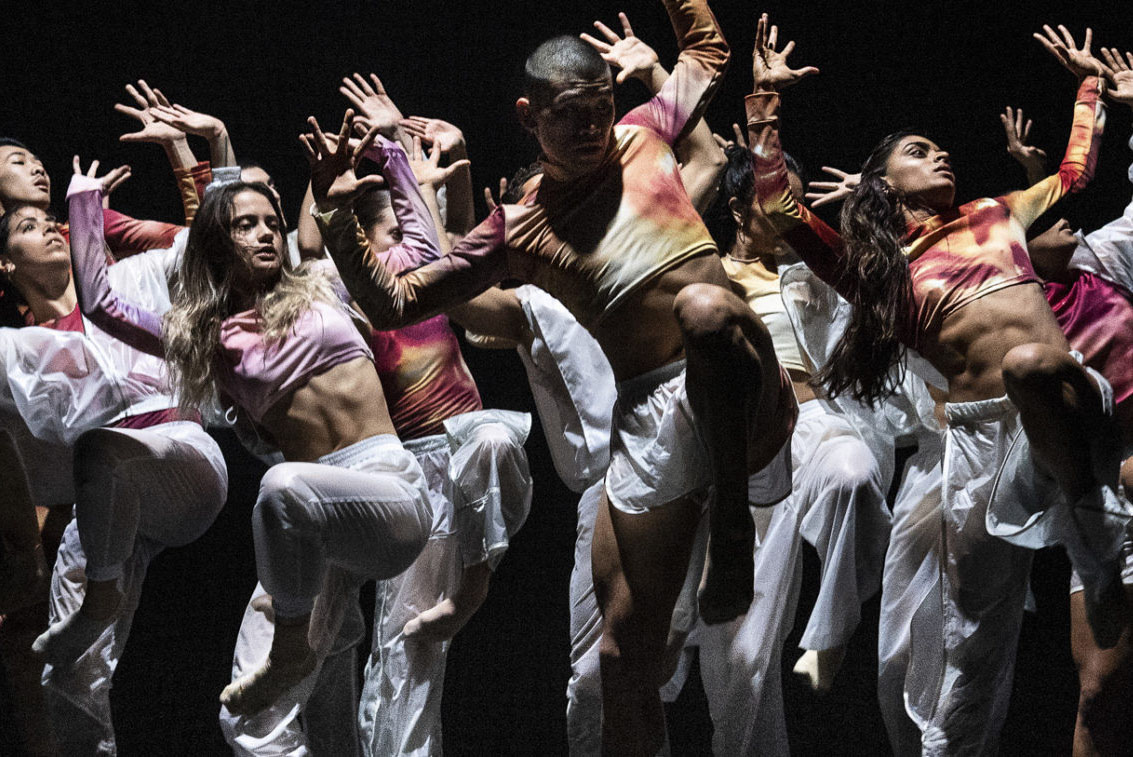
What is Rambert 2 I hear you ask? Briefly, it is the newly-formed junior offshoot of the main Rambert company in which 13 recently-graduated dancers aged between 19 and 25 have been selected from all over the world to perform works by established professional choreographers and take the works on tour, hopefully launching their own fledgling careers in the process. Chosen from over 800 applicants, this is a very lucky 13 indeed. Last night’s performance confirmed that we were witnessing new stars in the making. A discerning audience was on its feet at the end in appreciation of the artistry, athleticism and emotional intensity and intelligence this troupe brought to the four pieces in this presentation.
Grey Matter is a wonderfully abstract concept by choreographer Benoit Swan Pouffer as he explores, with the dancers, the role of neurons, cells that control memory, speech and muscle control in the brain. Pouffer: “…about a person who loses sight of their memories… the community giving them help and support… allowing them to live in the present.”
Starting with the intimate sounds of human breath, followed by the powerful drumbeat in composer GAIKA’s score, all 13 members of Rambert2 formed a kinetic, at times robotic human amoeba from which dancer Faye Stoeser would emerge as a shimmering central identity, owner of this pulsing sum of parts, sometimes leaving the security of the hub of dancers only to re-engage in its cluster in a moving impressionistic display, warmed sumptuously at times by Caravaggio-esque lighting by Lee Curran. As Stoeser stood alone in white light, her supporting ‘cells’ lying dormant, Pouffer’s metaphor was at its most powerful.
Rafael Bonachela’s E2 7SD, a backing of intimate voices and incidental noises (footsteps, cars pulling away) helped to paint an occasionally disturbing and emotionally intense picture of a relationship… “I like the sunshine, and the darkness… let’s not make this too personal…”, Conor Kerrigan and Aishwarya Raut performed an extraordinarily controlled and intimate pas de deux, laced with scissor kicks and whipped kicking turns and lifts, sometimes silhouetted against five spots that starred the light around them.
Ghost Dances, premièred at the Bristol Old Vic in 1981, was supposedly getting a final airing in this programme. But so powerful and still so relevant is its message that I would be surprised that it will be left in mothballs for long. Choreographed by Christopher Bruce, inspired by the horrors of the Pinochet regime in Chile in the 1970s, Ghost Dances remains a livid reminder of the cost of dictatorial power.
Three dancers adorned with death heads, with hair and loin cloths looking like rotting seaweed, prey on the colourful pageant of ordinary folk as they go about their lives, picking them off mid-celebration, stealing lovers, stealing hope – all to wonderful backing of guitar, charango, pan pipes and percussion played by the company, and atmospherically lit by Nick Chelton.
Finally, in Killer Pig, the throbbing urgency of Ori Lichtik’s music drives a livid display of pure athleticism from the company. Hua Han was remarkable as the thin-as-twigs soloist, contorting in ever more angular ways, like a wintry tree caught in a blast of air.
The company is given a chance to show off its cohesive nature as it plunges into an extraordinary finale in which arms and hands take on the form of huge jaws and teeth and bodies are animated by an irresistible beat. In one glorious solo interlude, the impressive Salomé Pressac owned the stage as she performed an exhilarating series of coupes jetés en tournant, a memorable cameo in a fabulous night of dance.
★★★★★ Simon Bishop 16th November 2018
Photo © Foteini Christofilopoulou.

